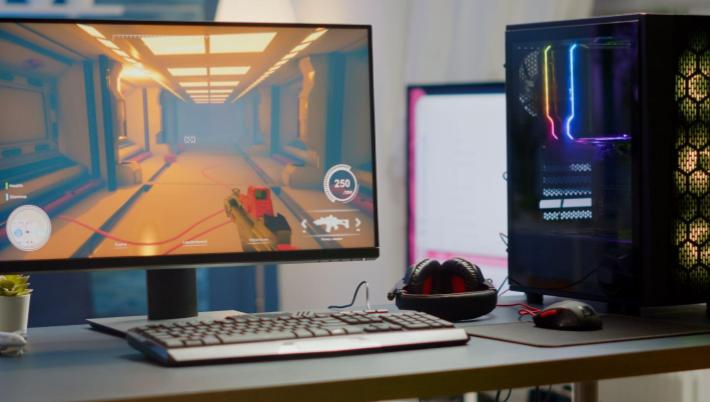Computer stores are stocked full of monitors, each one promising to deliver a better gaming experience than the others. In general, for most computer users, one screen is as good as the other. But if you’re a dedicated online casino player or video gamer you need to be more picky.
For all gamers, and especially for esports players, having the best screen resolution, refresh rate, response time, color, syncs and other elements can be the difference between good gameplay and exceptional gameplay.
Before you go out looking for your next gaming monitor, spend a little bit of time researching your options.
Some of the things that you’ll want to pay attention to include:
Screen Size and Resolution
A screen size of between 24” to 27” is generally the best size for gaming. Most players sit about 3 feet away from the screen so a monitor of that size will allow you to see everything at once. You may find that a larger monitor gives you a more immersive experience but the extra inches come with an extra price tag.
Likewise, the higher resolution that you get, the, more you’ll pay. 1080p is adequate but increasingly, gamers, are moving to 1140p and 4k. Don’t forget though, the higher the resolution, the fewer the number of frames your PC can drive.
The different aspect ratios are suited to different types of gaming setups. High resolution screens give you more pixels which gives you a better picture quality and, if you’re looking for the most immersive gaming experience, worthwhile. The higher the resolution, the bigger the screen should be. IN any case, you should make sure that your hardware supports the screen that you choose.
Curved Vs. Flat
Whether you have a curved or a flat screen will almost certainly not affect your performance but, again, they can give you a more immersive experience. If you choose a flat screen you might be left with blank and unused screen edges (known as “black bars”) but for most players, that’s not a big issue.
If you do decide to go with the pricier curved screen you need to decide how curved you want it – options range from 1800r to 4000r.
Many players today prefer the curved screen because, they say, it more accurately reflects the real world.
Refresh Rate
The Refresh Rate is one of the most important elements in purchasing a screen. The term “refresh rate” refers to the number of times the monitor refreshes the image on the screen. The higher the refresh rate, the smoother the image and the more responsive the gaming experience.
A basic refresh rate is 60hz while the noticeably more responsive rate is 144hz. There’s also a 240hz refresh rate option though most gaming pros don’t find it to be particularly meaningful. The more responsive 144hz+ refresh rates reduce tearing and ghosting while improving motion resolution. A 60hz refresh rate is the minimum required for most of today’s games but if you’re playing competitive esports you’ll want 144hz or more.
Response Time
Response time is NOT the refresh rate though many people confused the two. Response time refers to the speed at which the screen can change pixels between shades of gray. This involves the GTG (gray-to-gray) transition. Delaying response time can lead to annoying visual effects like ghosting. Response time numbers go from low (quick response time) to high (low response time) so you want to look for the lowest response time possible.
If you have an overdrive option on the monitor you will be able to adjust the response time speed which decreases the ghosting images left behind. This feature is useful if you’re playing a fast-paced title.
Overshoot
Another monitor feature that is useful for gamers is the overshoot feature that uses response boosting technology to enable the monitor to overcompensate the pixel transition time. This means that the color starts to change before the frame has arrived so the ghostly trail is IN FRONT of the image as opposed to BEHIND it.
Top Gaming Monitors
Some of the top gaming monitors on the market today include:
- The Alienware AW3423DW is the preferred monitor of many players who prize it for it’s top-level contrast and black levels, high refresh rate, wide color gamut and excellent color accuracy. Critics say that the text clarity could be better and its HDR performance is mixed. Despite this, it’s widely regarded as today’s top-of-the-line monitor for esports players.
- Acer Nitro XV272 is probably the best monitor for buyers on a budget. It’s color is highly accurate and it delivers a smooth, clear motion performance with a good range of image adjustments.
- Asus ROG Swift PG32UQX is a high-quality gaming monitor for players who are looking for excellent gaming performance with 4K resolution – even at a high price. The monitor comes with Ergonomic adjustment options and a dimmable mini-LED backlight though in addition to its high price tag it’s an energy gobbler.
- Gigabyte M27Q X shows what can be done with a 240hz refresh rate. The color accuracy and range of color options is massive and the pricing is reasonable.

